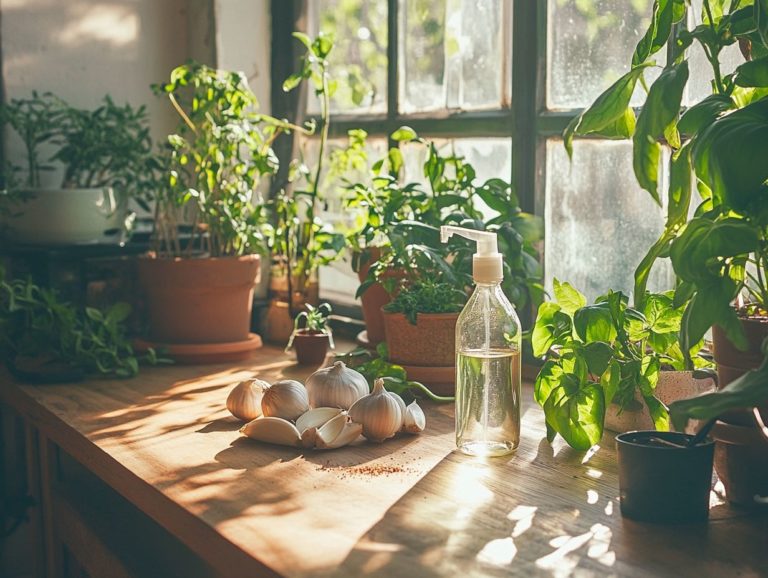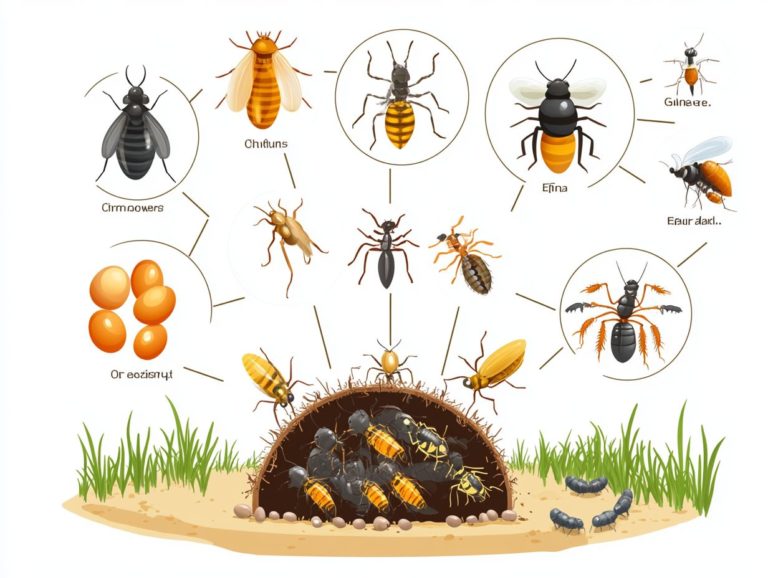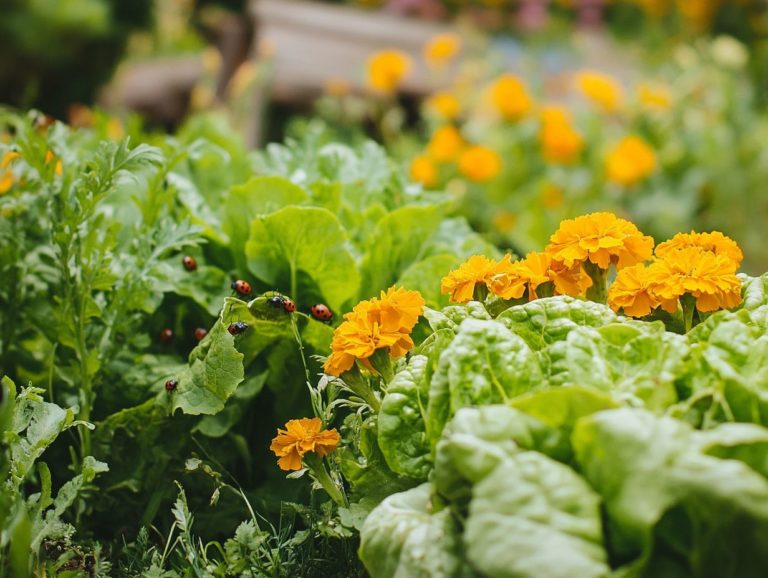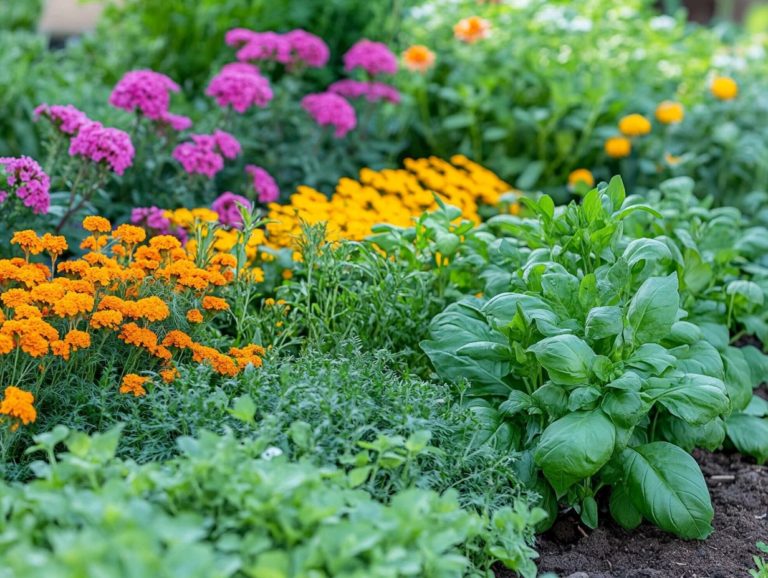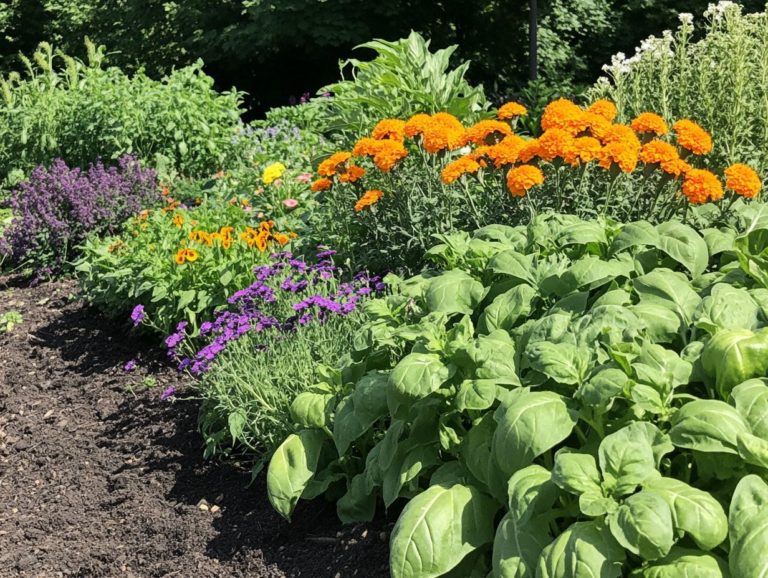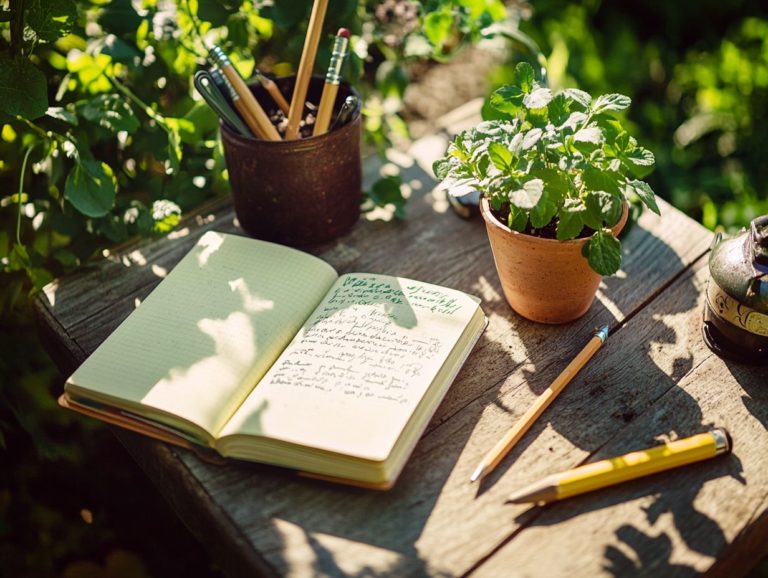Essential Techniques for Hand-Picking Pests
Gardening is an incredibly rewarding endeavor, yet it often presents the challenge of dealing with pesky invaders that threaten crop productivity and yield.
Hand-picking pests is a time-honored method to keep your garden healthy. This guide shows you why identifying pests is crucial and outlines essential tools for effective pest control.
You’ll find step-by-step techniques for hand-picking, along with invaluable tips to prevent future infestations. Let s dive in and protect your garden the natural way!
Contents
- Key Takeaways:
- Identifying Common Garden Pests
- Tools and Supplies for Hand-Picking
- Techniques for Hand-Picking Pests
- Preventing Pests in the Future
- Frequently Asked Questions
- What are some essential techniques for hand-picking pests?
- Why is it important to identify the pest correctly before hand-picking?
- What are some recommended hand-picking tools for pest removal?
- How should I dispose of pests after hand-picking them?
- Are there any safety precautions I should take when hand-picking pests?
- Can hand-picking pests be used as the sole method of pest control?
Key Takeaways:
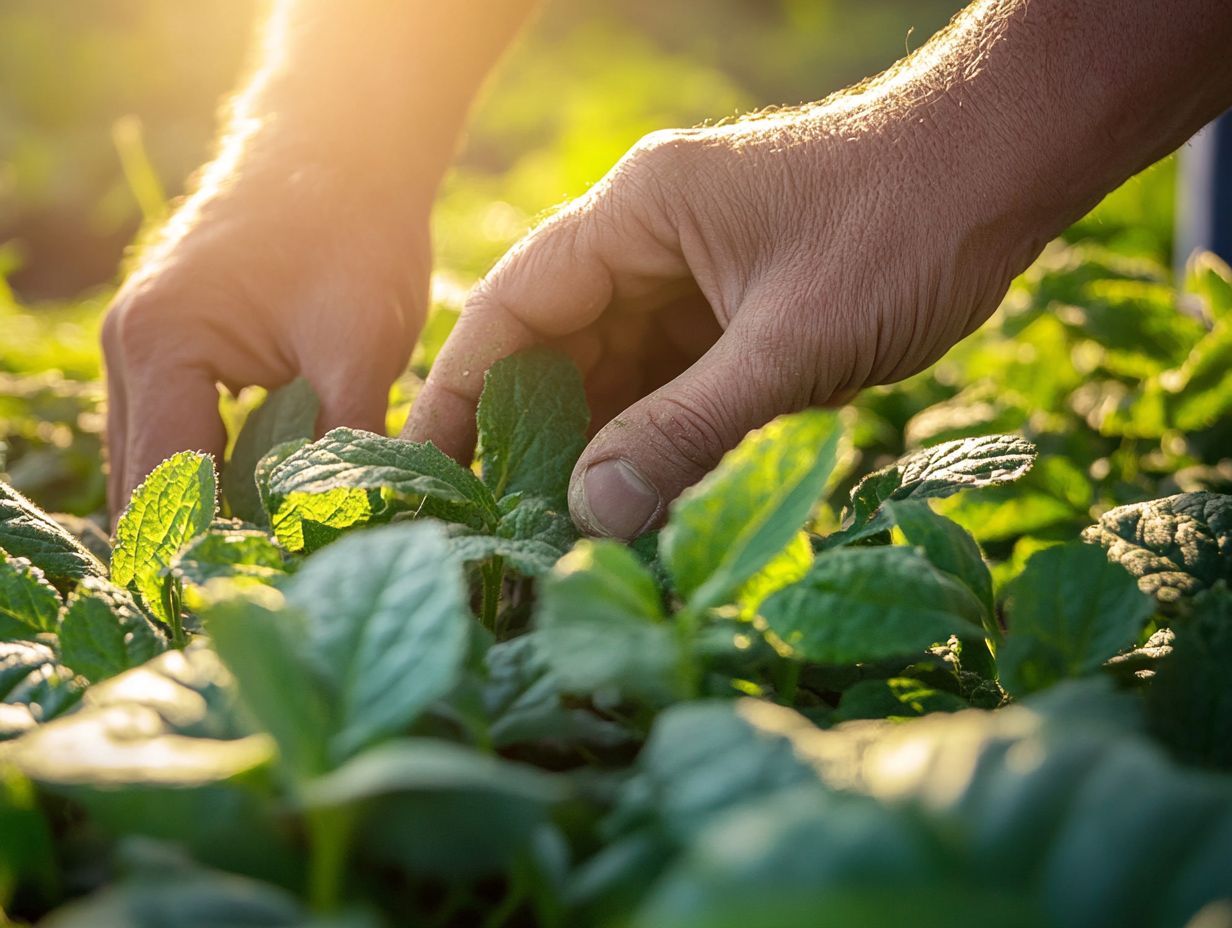
- Hand-picking pests? It s not just effective; it s also good for the planet!
- Identifying common garden pests and their traits is crucial for success.
- Using the right tools and techniques makes hand-picking simple and effective.
What is Hand-Picking and Why is it Important?
Hand-picking is a key method of pest management that allows you to manually remove pests from your plants. This approach minimizes the use of chemical controls (substances used in farming), promoting sustainable practices.
By using this technique, you help maintain ecological balance and develop a pest control strategy that reduces reliance on agrochemicals (chemicals used in farming) while enhancing soil health.
This method lets you spot pests fast, like aphids, caterpillars, and beetles. Understanding their behavior and lifecycle is key for a method that combines different strategies to control pests.
Engaging in this hands-on approach helps with immediate pest control and supports strategies that prioritize natural enemies and biological controls. By sticking to sustainable principles, you cut down on chemical inputs and their environmental consequences.
As you actively manage pests, you connect more deeply with your crops. This promotes an ecosystem where beneficial insects thrive while you effectively manage those pesky invaders.
Identifying Common Garden Pests
Identifying common garden pests is crucial for effective pest management and timely interventions. Know which pests are present to prevent infestations that could lead to significant yield losses.
Recognizing these threats early helps safeguard your crops and ensure a bountiful harvest.
Types of Pests and Their Characteristics
Different types of pests, like Mediterranean fruit flies, have unique traits that impact their lifecycle, behavior, and resistance to control methods.
Understanding these distinctions is essential for gardeners and farmers. They directly affect both crop yield and quality, especially with pest-resistant cultivars. Common garden pests you might encounter include:
- Aphids
- Caterpillars
- Root weevils
Each of these pests thrives in specific environments, influenced by factors like planting dates and irrigation. For instance, aphids reproduce quickly, sucking sap and causing stunted growth, while caterpillars can devour entire leaves overnight.
By recognizing the telltale signs of these pests, you can act quickly. Effective management includes introducing natural predators, using targeted insecticides, and employing mechanical methods to maintain a balanced ecosystem.
Tools and Supplies for Hand-Picking
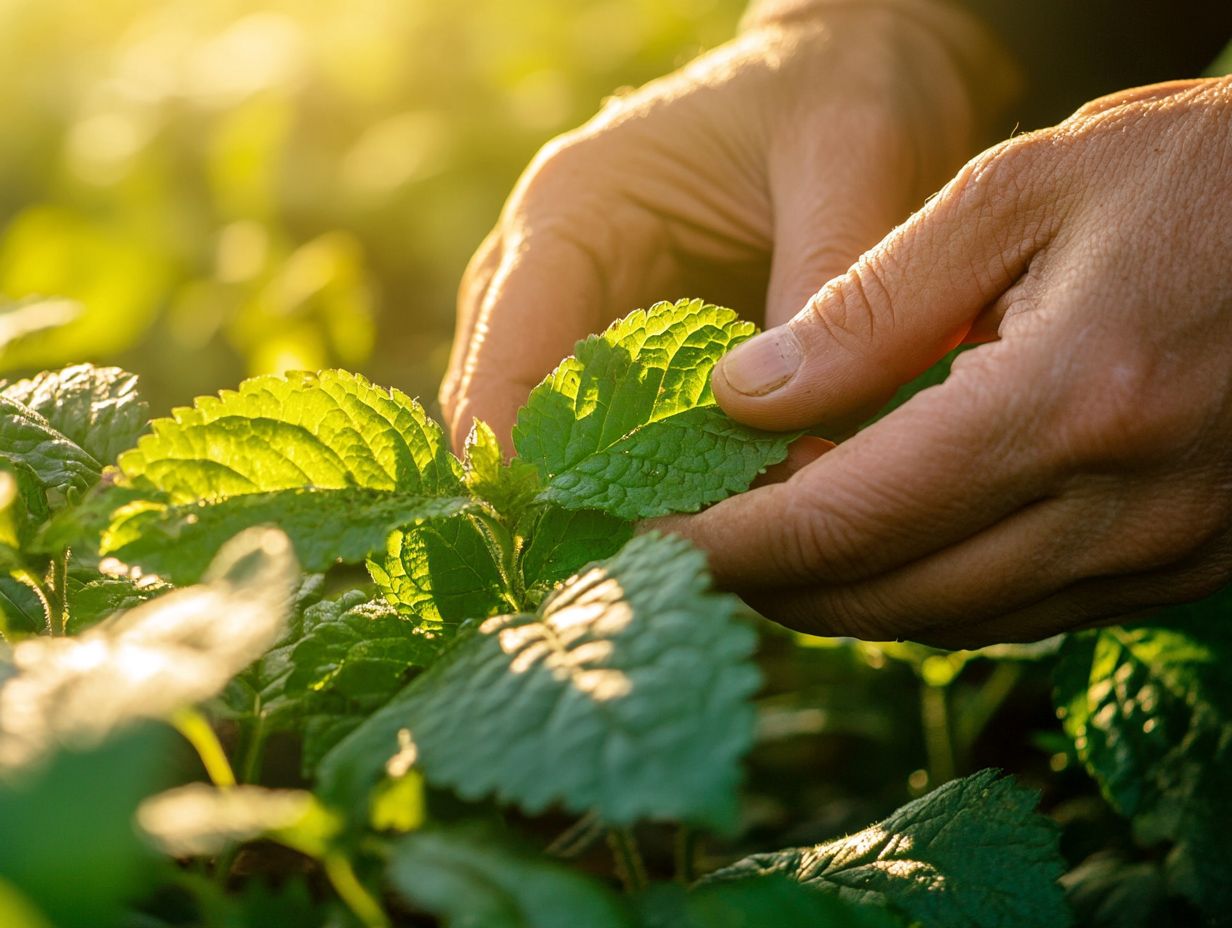
Using the right tools and supplies for hand-picking is essential. This promotes effective pest removal and pest suppression in your garden.
By aligning your practices with sustainable agriculture and natural management methods, you can significantly reduce your environmental impact while maintaining a healthy ecosystem.
Essential Equipment for Successful Pest Removal
Successful pest removal requires a variety of tools designed to enhance the efficiency and effectiveness of your hand-picking strategies.
To optimize your pest management, consider using specialized devices like insect vacuums, electronic traps, and monitoring systems. These tools help you analyze pest data to identify infestations early. Insect vacuums provide a non-toxic method for capturing pests, effectively limiting their spread and reducing reliance on chemical treatments. Placing sticky traps helps monitor insect populations and provides insights into pest dynamics.
Incorporating these tools streamlines your removal process and supports sustainable agriculture practices. This approach minimizes environmental impact and promotes a healthier ecosystem, making your pest control efforts more effective and eco-friendly.
Techniques for Hand-Picking Pests
Implementing effective hand-picking techniques is vital for pest removal, especially in agricultural settings. Reducing pest populations enhances crop productivity and fosters natural methods to control pests.
This strategic approach safeguards your harvest and promotes ecological balance, ensuring long-term sustainability in your farming methods.
Step-by-Step Instructions for Effective Removal
Follow these step-by-step instructions for effective pest removal through hand-picking, ensuring consistent application for optimal results:
- Inspect your plants closely for pests. Don t forget to check both sides of the leaves and the soil. Identifying the specific pests will guide your treatment.
- Put on gloves to protect your hands, and grab a small container to collect the pests. This helps minimize their chance of escaping. Consider the time of day; most pests are more active in the early morning or late afternoon.
- After collecting the pests, dispose of them far from your garden to prevent their return. Regularly monitor your plants health and use natural pest deterrents to maintain a thriving ecosystem.
This practice is vital for sustainable agriculture and boosts biodiversity!
Preventing Pests in the Future
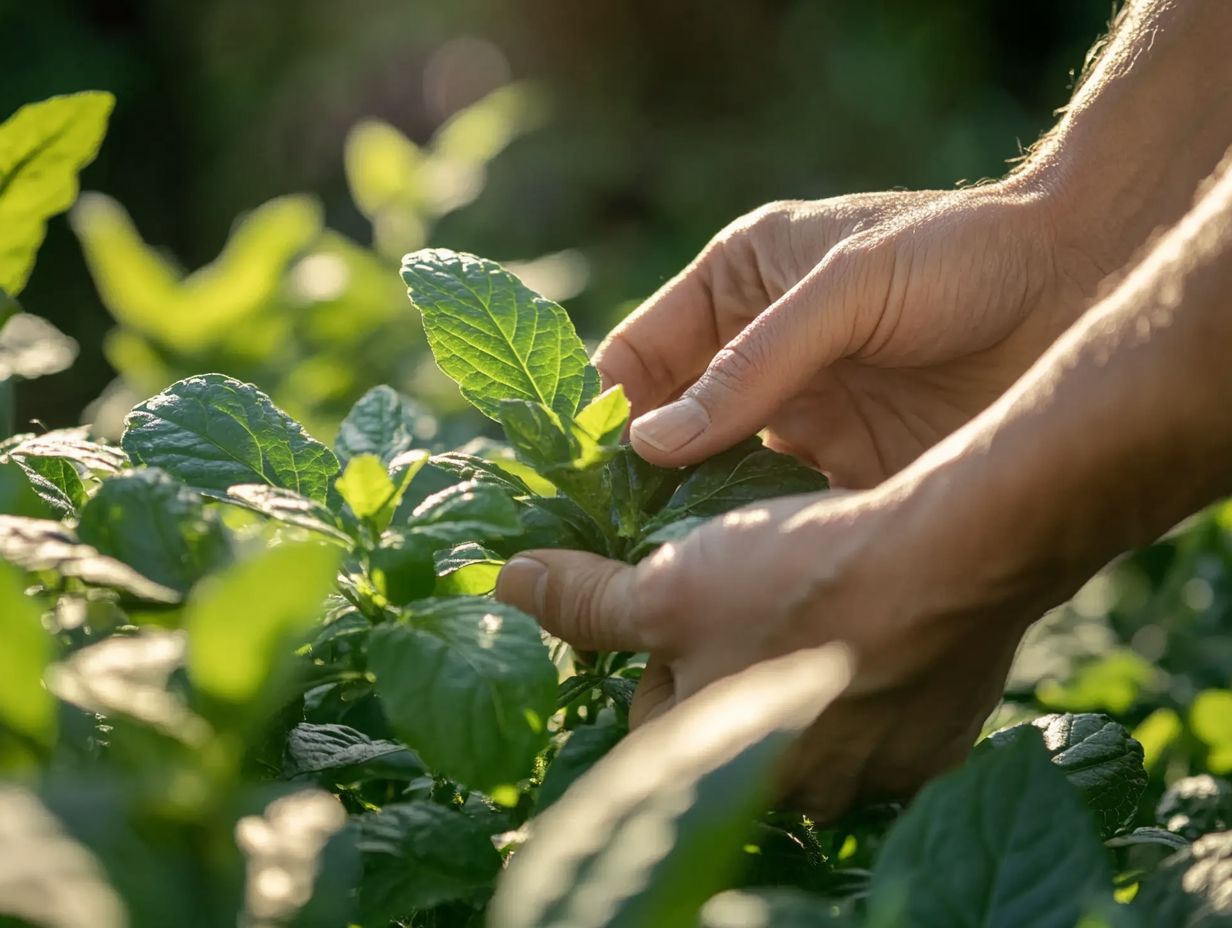
To effectively prevent pests in the future, you need a strategic approach to pest management. Incorporating practices like crop rotation and meticulous weed management disrupts pest lifecycles and deters infestations.
By implementing these tactics, you’ll create a proactive defense against potential pest issues and support crop monitoring efforts to mitigate threats.
Tips for Maintaining a Pest-Free Garden
Want a vibrant garden free from pesky invaders? Here are some tips!
To maintain a pest-free garden, you must implement various strategies that align with sustainable farming practices. This approach fosters an environment conducive to natural pest control while enhancing your crop productivity.
Start by prioritizing soil health. Nutrient-rich soil not only supports robust plant growth but also bolsters their resilience against pests. Incorporating organic matter, such as compost, can significantly improve both soil structure and fertility, ultimately creating a thriving habitat for beneficial insects.
By encouraging these natural allies like ladybugs and lacewings you can reduce your reliance on chemical interventions.
Regularly monitoring your plants allows you to detect any pest activity early, enabling timely interventions that minimize damage and support pest management strategies.
Using eco-friendly pest control methods, such as introducing barriers or practicing companion planting, helps keep your garden healthy while ensuring a lush, vibrant environment that supports beneficial insects.
Frequently Asked Questions
What are some essential techniques for hand-picking pests?
Some essential techniques for hand-picking pests include identifying the pest correctly, using proper hand-picking tools, and removing the pests systematically to enhance pest elimination, as highlighted in the top 5 pest control techniques for vegetables.
Why is it important to identify the pest correctly before hand-picking?

It is important to identify the pest correctly to ensure that you are targeting the right pest and not accidentally removing beneficial insects. This also allows you to use the most effective hand-picking technique for that specific pest.
What are some recommended hand-picking tools for pest removal?
Recommended hand-picking tools for pest removal include:
- Tweezers
- Forceps
- Small brush
- Bucket of soapy water
These tools align with sustainable agriculture practices and help to safely and effectively remove pests without causing harm to yourself or the plants.
How should I dispose of pests after hand-picking them?
After hand-picking pests, it is important to dispose of them properly to prevent further infestations. You can either release them in a different location far from your garden or place them in a sealed container and freeze them to prevent escape.
Are there any safety precautions I should take when hand-picking pests?
Yes, it is important to wear gloves while hand-picking pests to protect your hands from potential irritation or bites. It is also recommended to wash your hands thoroughly after handling pests.
Can hand-picking pests be used as the sole method of pest control?
Hand-picking pests can be effective in controlling a small number of pests, but it should not be relied upon as the sole method of pest control. It is best to combine hand-picking with other pest control methods for a more comprehensive approach.
Start implementing these techniques today and watch your garden thrive!

